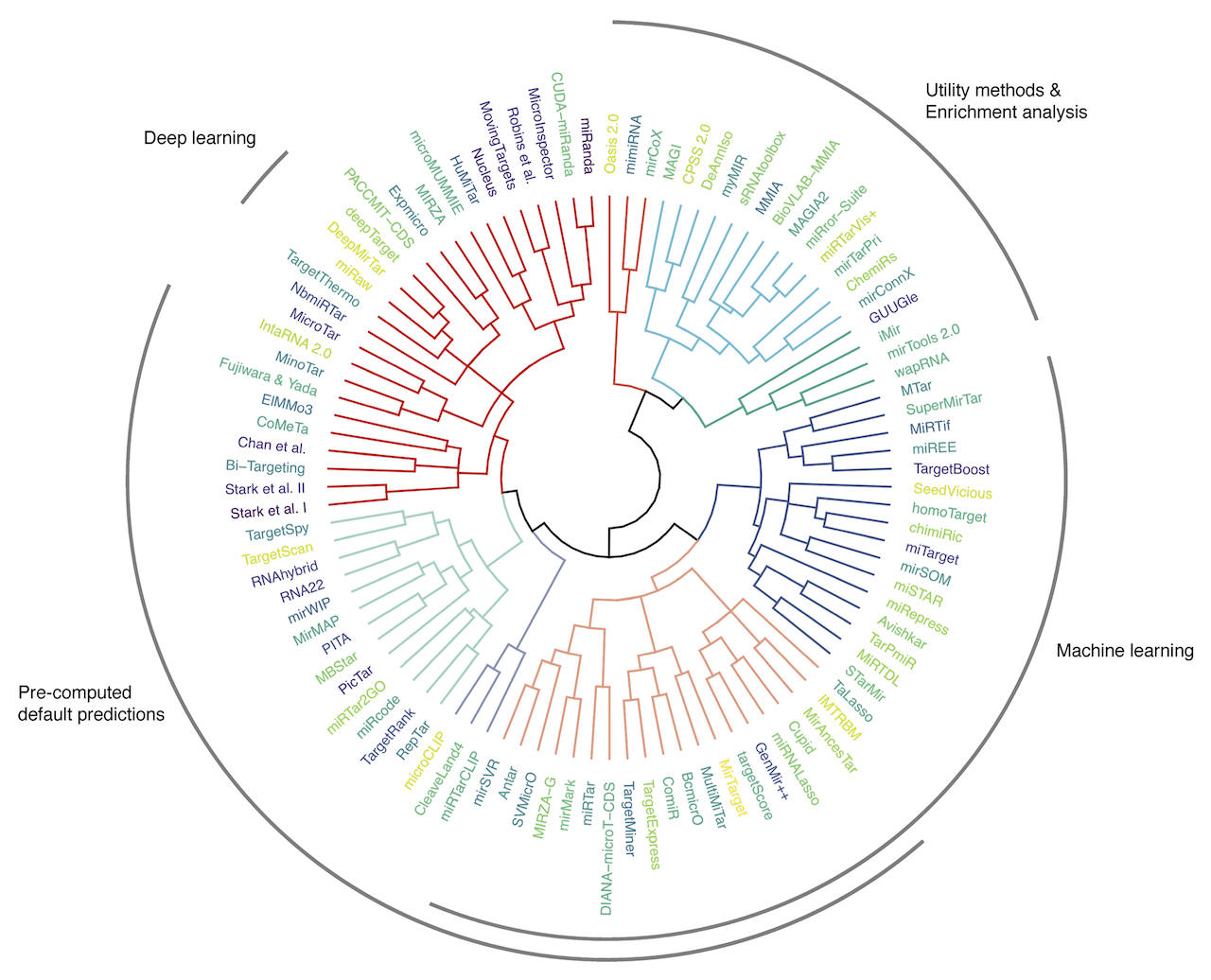Welcome to the microRNA-target prediction tools guide
A wide range of MicroRNA-target predictions tools have been proposed so far.
This interactive guide provides several simplified mechanisms for prospective end-users to select candidate tools among the large set of publications suitable for a pre-defined research study set up.
To this end, an interface to a rich set of features about 98 in silico miRNA-target prediction methods is offered, which is designed to complement the accompanied review article.
Please start by using the buttons below or navigating through the links in the top-bar to refer to individual pages.
Answer a six-step questionnaire to peform tool selection using our pre-defined and recommended scheme.
Get startedUse the full catalogue of tool features to answer an expanded questionnaire where you can select each question that should appear next until you met required conditions.
Get startedDirectly access the full-featured table containing more than 3000 informative cells.
View tableHow-to cite:
If you are using our tool for your research purposes, please cite the respective publication:Kern, F. et al.
What’s the target: understanding two decades of in silico microRNA-target prediction. Brief Bioinform.. https://doi.org/10.1093/bib/bbz111 (2019).
More materials
